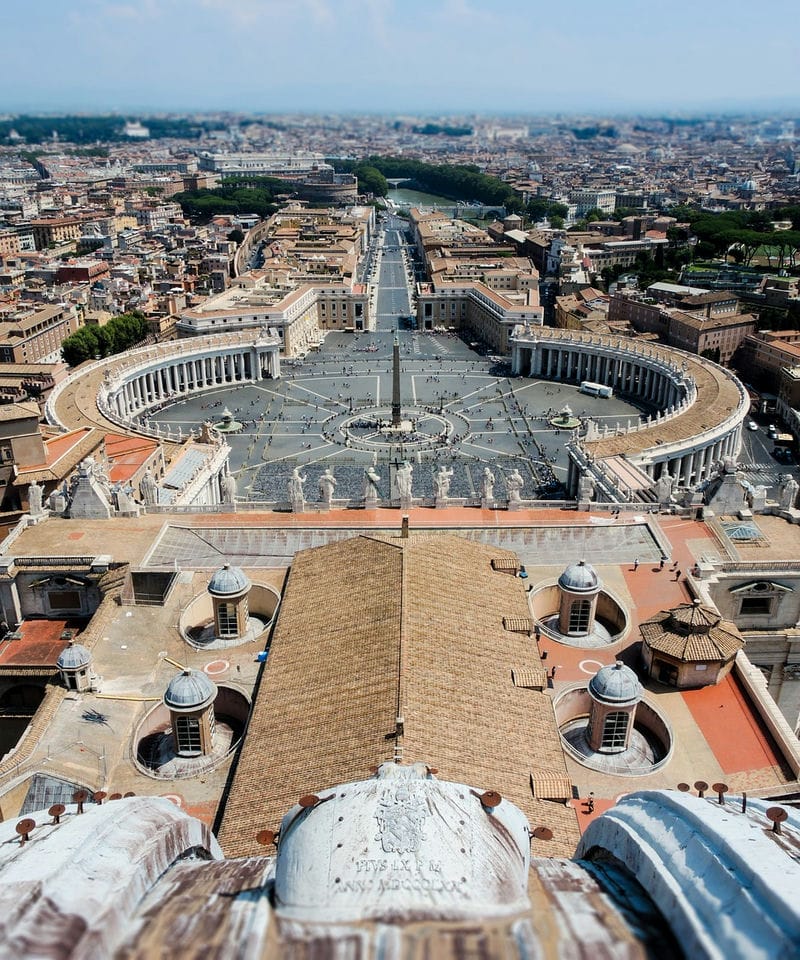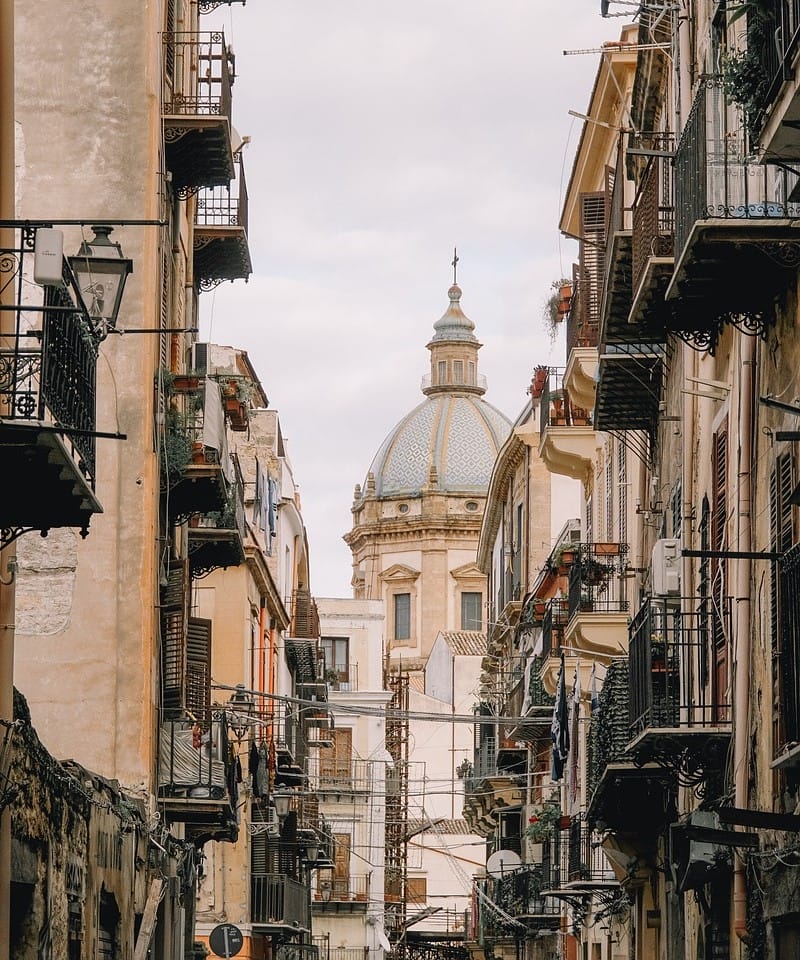
Colosseum Guide: Essential Tips for Visiting Rome's Iconic Arena
Key Takeaways
- A Colosseum guide is necessary to save yourself the trouble of wasting time and resources when visiting the legendary site.
- Book tickets early to skip lines.
- Morning visits are the best if you care about coming across fewer crowds.
- Don't forget to explore Hypogeum for a unique Colosseum underground tour.

The Colosseum, an iconic symbol of ancient Rome, continues to fascinate visitors with its grand architecture and historical significance.
Located at Piazza del Colosseo, 1, in Rome, Italy, it stands as the largest amphitheater ever built and a UNESCO World Heritage site.
Planning your visit ahead of time is crucial to avoid long lines and ensure a more enjoyable experience.
Visitors have a variety of options when it comes to exploring the Colosseum.
Tickets can be booked online, often featuring options that include guided tours of the popular Hypogeum, an underground area where gladiators once prepared for battle.
Morning visits, around 9:30 AM, are ideal for peaceful exploration, avoiding the crowds that surge in during midday.
With so much to offer, the Colosseum invites not only a deep dive into Roman history but also promises a memorable part of any Rome itinerary.
Exploring nearby attractions can enrich the visit, making it a highlight of the trip.
History Of The Colosseum

The Colosseum, also known as the Flavian Amphitheater, is a key monument of ancient Rome.
Its construction and architecture highlight Roman engineering, while its historical uses reflect various aspects of Roman life and culture.
Construction And Architecture
The construction of the Colosseum began in 70 A.D. under Emperor Vespasian of the Flavian dynasty and was completed in 80 A.D. by his successor, Titus.
Unlike earlier amphitheaters, this massive structure was freestanding, built using stone and concrete.
The Colosseum could hold up to 50,000 spectators.
It featured a complex system of vaults and arches, showcasing the innovative building techniques of the time.
Its elliptical design provided unobstructed views for audiences, emphasizing the grandeur of Roman architectural prowess.
Purpose And Use In Ancient Rome
The Colosseum was a central hub for entertainment in ancient Rome. It hosted a variety of events including gladiatorial contests, battles between men and beasts, and mock sea battles, known as "naumachiae."
These spectacles were not just for amusement; they showcased Roman power and the skills of gladiators.
Festivities served political and social purposes, reinforcing the emperor's influence and uniting the Roman populace.
The events were often sponsored by emperors to gain popularity and control.
As a symbol of Roman history, the Colosseum illustrates the values and societal norms of the Roman Empire, reflecting the complexities of Roman culture.
Architectural Marvels Of The Colosseum

The Colosseum, an iconic symbol of ancient Rome, showcases remarkable architectural achievements.
Its innovative design, impressive dimensions, and unique features reveal the advanced capabilities of Roman engineering.
Design And Engineering
The Colosseum's design highlights ingenious Roman engineering. It features a series of interconnected arches and vaults, which distribute weight evenly, allowing the structure to stand firm for centuries.
The use of concrete and stone, such as travertine and tuff, provided durability and strength.
A complex system of corridors and staircases allowed tens of thousands of spectators to enter and exit efficiently.
This revolutionary design made the Colosseum one of the first large-scale venues to accommodate such a vast audience smoothly.
The amphitheater's elliptical shape ensured optimal visibility from all angles, enhancing the viewing experience.
Dimensions And Capacity
The sheer size of the Colosseum is a testament to Roman ambition. It measures approximately 189 meters long, 156 meters wide, and 48 meters high.
These dimensions made it the largest amphitheater of its time, capable of hosting grand events.
The venue could hold around 50,000 to 80,000 spectators.
Seating was arranged by social hierarchy, with the emperor and senators occupying the best positions, while ordinary citizens sat further from the action. This seating plan reflected Roman society and added to the overall experience of attendees.
Notable Features
The Colosseum includes several notable features that set it apart.
Its retractable awning system, known as the velarium, provided shade for spectators, an impressive feat of engineering. Sailors from the Roman Navy managed this large canopy, ensuring comfort for those below.
Another intriguing feature is the complex network of underground passages, or hypogeum, used for gladiator and animal preparation.
These tunnels allowed for dramatic entrances and hidden movement within the arena.
Additionally, the Colosseum's intricate décor and statuary, although largely destroyed, showcased artistic excellence and added grandeur to the overall experience.
Visiting The Colosseum

Visiting the Colosseum can be a memorable experience, but it's essential to plan accordingly.
Understanding how to get there, purchasing the right Colosseum tickets, choosing the best time to visit, and deciding between guided or self-guided tours can enhance your trip.
How To Get There
The Colosseum is located in the heart of Rome and is easily accessible by various modes of transportation.
Metro Line B stops directly at the Colosseo station, making it a convenient choice. Buses and trams are also available, with several lines stopping nearby.
For those who prefer a more scenic route, walking through the historic streets of Rome can be a delightful option as well.
Colosseum Ticket Information
A variety of tickets are available to suit different interests and budgets.
Standard tickets include entry to the Colosseum, Roman Forum, and Palatine Hill.
Full Experience tickets grant access to the Arena and Underground areas.
Booking tickets online is recommended to avoid long queues. Fast-track and skip-the-line options are also available for a smoother entry.
It should be noted that there are several free entry dates to the Colosseum in Rome each year! These dates are typically offered as part of Italy's effort to promote cultural heritage and allow more people to access historical sites.
The free entry days usually include the first Sunday of each month, the 25th of April, which is their Liberation Day, the 2nd of June, which is their Republic Day, and the European Heritage Days.
The latter is a weekend in September dedicated to celebrating European culture and heritage, during which many cultural sites, including the Colosseum, offer free or reduced entry.
It's important to note that while the entry is free on these days, the lines can be long due to the high number of visitors. You may also still need to book a free ticket in advance to secure your spot, as capacity is limited.
Please keep in mind that for the latest information on specific dates or changes, it’s advisable to check the official site and the Colosseum’s visitor information.
Best Times To Visit
The best times to visit the Colosseum are during the off-peak seasons.
Early morning visits can help avoid crowds, while visiting later in the afternoon may offer cooler temperatures. The winter months are generally less crowded.
For a unique experience, some tours are offered at night, allowing visitors to see the Colosseum in a different light.
Guided Tours Vs. Self-Guided Tours
Both guided and self-guided tours have their benefits, but in this case, the benefits of a guided tour outnumber the self-guided ones significantly.
Guided tours provide detailed historical context and often include access to restricted areas like the Underground.
Facts and stories that begin from ancient Romans and extend up to Pope John Paul II and are not commonly known, will be excluded from your self-guided tour and deprive you the opportunity to take full advantage of your surroundings.
Self-guided tours, with the aid of an audioguide, offer flexibility to explore at your own pace.
Private guided tours are also available for a personalized experience, catering to specific interests and needs.
What To See Inside The Colosseum, Rome

Visitors to the Colosseum can explore various levels and areas of this ancient structure, each offering a glimpse into its historical uses and significance.
Exhibitions and displays further enrich the experience by showcasing artifacts and details about Roman gladiatorial games and architecture.
Main Levels And Areas
The Colosseum features different levels, each designed for specific purposes.
The arena floor was the main stage for shows, where gladiators fought.
Below this, the hypogeum lies, an intricate underground network with tunnels and cells where animals and fighters waited to emerge through trap doors. These elements showcase the complex engineering that supported the grand spectacles.
The second level offered seating with a good view for the Roman middle class. This section lets visitors see the action from a different perspective.
Higher up, the attic area, although not open to the public, once accommodated wooden seating for the poorest citizens and women. This tiered seating system reflected Roman social hierarchies, providing insight into the past social structure.
Exhibitions And Displays
Inside the Roman Colosseum, visitors encounter exhibitions that delve into various aspects of its history.
Detailed displays explain the architecture, including the use of trap doors in the arena and the complex network beneath, known as the hypogeum. These exhibits reveal how the Colosseum could stage such elaborate events.
Artifacts from excavations, such as tools and other remains, are often on display.
Interactive exhibits present facts about the gladiators and their lives, as well as the broader cultural significance of the games held in the Colosseum's arena.
These displays provide a richer understanding of what the Colosseum represented in ancient Rome.
Insider Tips For A Great Visit

Visiting the Colosseum can be a remarkable experience if you plan properly. Focus on picking the right time, bringing essentials, and ensuring safety for a memorable trip.
Avoiding The Crowds
To enjoy the Colosseum with fewer crowds, try visiting early in the morning.
The Colosseum is arguably one of the most popular tourist attractions alongside the Vatican City, the Vatican museums, and the Trevi fountain.
Arriving around 9:30 AM allows for a more peaceful experience.
Booking an entry ticket online in advance is smart to skip long lines at the entrance.
Consider visiting during weekdays or in the off-peak seasons, like late autumn or early spring, when there are generally fewer tourists.
Choosing a guided tour can help get inside faster, as these groups often have special entrance privileges.
Also, popular spots like the Underground area may require advance bookings, so plan accordingly.
What To Bring
Given the lack of shade at the Colosseum, visitors should prepare for the sun. A hat and sunglasses are essential to protect against UV rays.
Comfortable shoes are important since exploring the site involves a lot of walking and sometimes rough terrain.
Carrying a small bottle of water is crucial, especially during the summer months, to stay hydrated.
Photography enthusiasts might want to bring a camera to capture the stunning architecture, but keep it lightweight to make carrying it easier during the visit.
A small backpack can be handy for keeping your belongings together, but avoid large bags as these may not be allowed, and storage facilities might not be available.
Safety And Accessibility
The Colosseum is accessible to people with disabilities, with elevators and ramps to help navigate.
Visitors with mobility issues should inquire about these services to ensure a smooth visit.
Be cautious on uneven surfaces and wear appropriate footwear to avoid trips or falls.
Follow the paths and avoid climbing on ancient stones, as safety rules aim to protect both visitors and the historical structure.
Bring a valid ID, as it may be needed for verification, especially when purchasing reduced-price tickets.
Keep belongings secure to safeguard against any pickpockets in crowded areas around the venue.
Nearby Attractions

Visitors will find a wealth of history and culture surrounding the Colosseum.
These nearby sites offer a glimpse into ancient Rome's grandeur and allow for a deep dive into its architectural and cultural achievements.
From majestic arches to bustling forums, each attraction tells a unique story.
Roman Forum
The Roman Forum, once the heart of Rome's public life, lies near the Colosseum. It was the center of political, social, and commercial activities.
A bustling hub, the Forum hosted processions, elections, and triumphal parades. Visitors can see ruins of important government buildings and shrines.
Walking through these ancient streets, one can imagine the vibrant energy of Rome's past.
Several temples and arches dot the landscape. The Temple of Saturn, known for its towering columns, and the Arch of Titus, commemorating Roman victories, stand out.
The combination of these structures showcases the architectural brilliance of ancient Rome.
For those interested in history and culture, the Forum offers a detailed look into the daily life and achievements of the Roman civilization.
Palatine Hill
Overlooking the Roman Forum is the Palatine Hill, a site rich with myth and history. According to legend, it was here that the twins Romulus and Remus were found by a she-wolf.
The hill is home to the ruins of opulent imperial palaces, offering a glimpse into the extravagant lives of Rome's elite.
Visitors can explore the remains of Emperor Augustus's residence, known for its well-preserved frescoes. The House of Livia displays intricate mosaics and artistic designs.
The hill also offers stunning views of the city and is surrounded by lush gardens.
Arch Of Constantine
The Arch of Constantine stands as a testament to Roman engineering and art. It commemorates Emperor Constantine's victory at the Battle of Milvian Bridge.
Erected in A.D. 315, the arch features intricate carvings and sculptures depicting conquest and peace.
It is situated near the Colosseum, making it a convenient stop for visitors. Carvings on the arch incorporate pieces from older monuments, showing the blending of different artistic styles over time.
This blend gives insight into the evolution of Roman art and architecture.
Capitoline Hill
Capitoline Hill, one of Rome's seven hills, holds significant historic value. It is home to the Capitoline Museums, which house an extensive collection of art and artifacts.
These museums include sculptures, inscriptions, and remnants from ancient Rome.
Visitors can admire the grand statue of Marcus Aurelius and other iconic pieces. Michelangelo redesigned the hill's piazza during the Renaissance, adding to its architectural beauty.
Situated near the Roman Forum, the hill provides breathtaking views of ancient and modern Rome, making it a must-visit for those interested in history and art.
Piazza Venezia
Piazza Venezia serves as a central hub in Rome, known for its striking architecture and historical significance.
The towering Vittoriano monument dominates the square, dedicated to Victor Emmanuel II, the first king of unified Italy.
It offers stunning panoramic views of the city.
The piazza is also near several significant attractions, including the Roman Forum and the Capitoline Hill. Its strategic location makes it a perfect starting point for exploring the city's historic sites.
Final Thoughts

Visiting the Colosseum is a fascinating glimpse into ancient history. The structure, with its grand arches and iconic Colosseum arena floor, stands as a testament to Roman engineering and culture.
Tips for Visitors:
- Book Tickets Early: Purchase in advance to secure entry.
- Visit During Off-Peak Times: Early mornings or late afternoons can be less crowded.
Additional Experiences:
- Consider a guided tour to access areas like the underground and arena floor.
Whether a history enthusiast or a casual visitor, the Colosseum offers a unique experience.
Opting for an official tour over a self-guided Colosseum tour will upgrade your experience and give you insight into the long-gone civilization you wouldn't otherwise have the opportunity to gain.
Being well-prepared enhances the visit, letting each person appreciate this historic monument fully!












